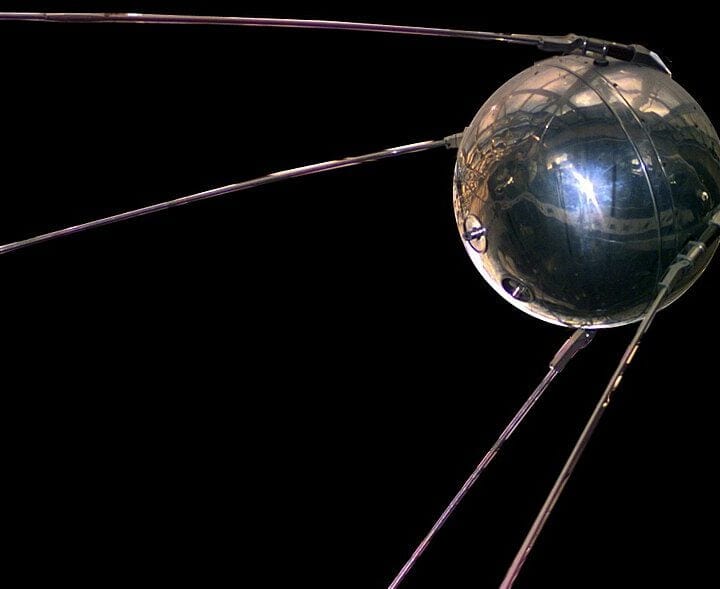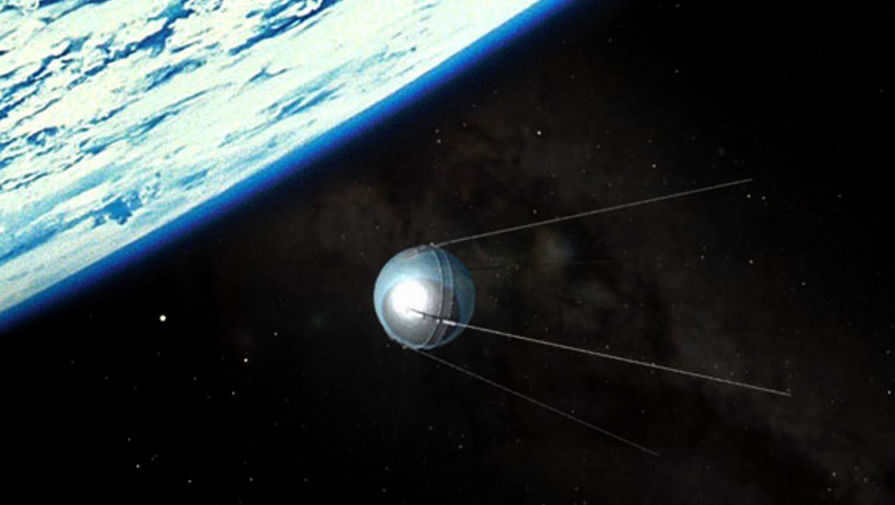
It has been 60 years since the USSR successfully sent the first man-made satellite into space. "Gazeta.Ru" takes a look back at the historical context surrounding this groundbreaking achievement and interviews individuals who witnessed this legendary event firsthand. One such individual is an advisor to the government of South Australia, who recently shared his personal recollections with "Gazeta.Ru".
Once upon a time, a rocket was born
In the early 20th century, the field of aviation captivated the imaginations of people. In 1908, Konstantin Tsiolkovsky, the pioneer of theoretical cosmonautics, published an article titled “Exploration of World Space by Jet Instruments” in the journal “Bulletin of Aeronautics”. This publication, along with his other works, foresaw the development of liquid-fueled rockets, artificial satellites, and orbital stations.
The creation of the satellite was the culmination of years of hard work by numerous research institutes and design bureaus.
In preparation for the Great Patriotic War, laboratories in the USSR were able to create solid-fuel rockets and boosters for aircraft, as well as the first domestically produced liquid-propellant engines. The GIRD-09, the USSR’s inaugural rocket featuring a liquid rocket engine, was successfully launched in 1933. Extensive research and development efforts resulted in the creation and testing of ballistic and cruise missiles for a variety of purposes, alongside both solid-fuel and liquid-propellant engines.
Dedicated scientists and inventors who dedicated years of their lives to the advancement of rockets with jet engines saw the exploration of space as the ultimate objective of their endeavors.
As early as the 1930s, designer Mikhail Tikhonravov, a collaborator of Sergei Korolev, stated: “Every endeavor in the realm of rocket technology inevitably paves the way for space travel.”
Under the leadership of Korolev, a number of Soviet missiles were developed and adopted based on this technology. The development of the R-7 rocket began in 1954, which had a range of up to 9,500 kilometers. This rocket, known as the “Seven”, became the world’s first intercontinental ballistic missile and successfully tested its ability to deliver a warhead over an intercontinental range.
“The story of the creation of the First Sputnik is intertwined with the development of the missile. Both the Soviet Union and the United States drew on German rocket technology,” noted design scientist Boris Chertok.
On September 25, 1955, during the commemorative gathering at the Moscow Higher Technical School named after N.V. Lomonosov, Sergey Korolev made a statement. In his address at Bauman Moscow State University, which was dedicated to its 125th anniversary, Korolev expressed the following objectives: “Our mission is for Soviet rockets to surpass the altitude and speed achievements of any other nation. Our mission is for Soviet citizens to travel in space on a rocket. We aim to launch the first Soviet-made artificial satellite into orbit around the Earth, developed entirely by Soviet scientists and engineers.”
Only a balloon!
Korolev put forward the Seven as a potential candidate for sending an artificial satellite into space. This proposal received backing from the USSR Academy of Sciences. In April 1956, the All-Union Conference on the Study of the Upper Atmosphere was convened at Korolev’s recommendation. During the conference, Korolev presented a report titled “Exploring the upper atmosphere using long-range rockets”.
“The rapid advancement of technology suggests that in the near future, we may witness the creation of an artificial satellite orbiting the Earth, possibly at relatively low altitudes, and eventually a permanent satellite,” he stated. “The ultimate goal is to develop a spacecraft capable of reaching the Moon and returning from it. While launching from a satellite offers the easiest solution, launching from the Earth is also a viable option.”
At first, the Government directive mandated the establishment of a satellite with the primary objectives of measuring the ionic composition of space, corpuscular radiation emitted by the Sun, magnetic fields, cosmic rays, the thermal conditions of the satellite, its deceleration in the upper atmosphere, the duration of its presence in orbit, the precision of its coordinates and orbit parameters. The satellite’s weight was expected to be between 1000-1400 kg, with an additional 200-300 kg for the research equipment. The target timeframe for launching the satellite into orbit was set for 1957-1958.
Korolev Design Bureau developed various versions of the laboratory satellite, weighing up to 1300 kg. However, it quickly became apparent that the manufacturing challenges of creating reliable scientific equipment would prevent the satellite from being completed on time. As a solution, Korolev suggested launching a simpler satellite into space instead of the complex laboratory model, as the USSR risked losing the race for the first satellite launch. This proposal was approved.
There was a debate regarding the design of the first Earth satellite. Korolev insisted that it should be a sphere and nothing else.
By September 1957, the satellite had successfully completed its final tests on the vibration test bench and in the thermal chamber.
Two radio transmitters with a power output of 1 watt were installed on the satellite, emitting signals with wavelengths of 15 and 7.5 meters. The satellite’s outer surface was equipped with four rod antennas, each measuring 2.4-2.9 meters in length. The signal emitted by the transmitters had a duration of 0.3 seconds, and it could be received from a distance of up to 10,000 kilometers.
Meanwhile, test launches of the Seven satellite were carried out at the Tyura-Tam test site, which would later become the Baikonur Cosmodrome.
In September, the rocket designated for launching the satellite arrived at the test site. This rocket was seven tons lighter than the standard ones, as the designers had made several modifications. They replaced the head part with a transition structure for the satellite, removed the equipment for radio control systems, and simplified the automatic engine shutdown mechanism.
On October 2, Korolev issued an order for the flight tests of the PS-1 and sent a notification of readiness to Moscow, but did not receive any response. Subsequently, he took it upon himself to position the rocket with the satellite for launch.
Those who win are not judged
At 22:28 Moscow time on October 4, 1957, humanity entered a new era of space exploration. The launch vehicle took off from the launch site and ascended into the night sky, achieving the first ever space velocity and successfully placing the first artificial satellite into orbit.
The satellite’s signal was received by amateur radio operators worldwide.
Soon after the first orbit, a message from TASS was broadcasted: “Thanks to the tremendous efforts of research institutes and design bureaus, the world’s first artificial Earth satellite has been created.”
“Following the initial excitement when the test site received the universally recognized signals of “BIP-BIP-BIP-BIP” and the telemetry was finally processed, it was discovered: the rocket launched “right on time,” as Chertok recalled. The “G” engine side block entered the mode with a slight delay, less than a second before the designated control time. If the delay had been slightly longer, the system would have automatically “reset” and the launch would have been aborted. Furthermore, the tank emptying control system malfunctioned just 16 seconds into the flight. This resulted in increased kerosene consumption and the central unit’s engine shutting down one second earlier than anticipated. There were other technical issues as well. If things had gone slightly differently, the desired initial velocity for space might not have been achieved. However, winners are not judged! The important thing is that a great accomplishment has been made!”
The satellite completed approximately 1440 orbits around the Earth during its 96-minute period of orbit. Its journey in Earth orbit concluded on January 4, 1958.
In addition to confirming launch decisions and studying equipment operation conditions, the objectives of the launch also involved investigating the behavior of radio waves emitted by the satellite’s transmitters as they passed through the ionosphere. Additionally, the launch aimed to experimentally determine the density of the upper atmosphere by observing the satellite’s deceleration. The data collected during the mission proved to be highly valuable for scientific research, particularly in developing a theory of satellite braking based on measurements of high atmospheric density.
“The entire world was left in awe! The satellite completely shifted the balance of power in politics. The Secretary of Defense of the United States proclaimed, ‘Attaining victory in a war against the USSR is now an unattainable goal.’ By replacing the massive thermonuclear hydrogen bomb with a small satellite, we achieved a monumental political and societal triumph,” Chertok expressed.
During the recent International Congress of Astronautics in Adelaide, Prof. Robert Thomas, the environmental advisor of the South Australian government, shared his childhood memories of witnessing the first satellite’s flight with a correspondent from Gazeta.Ru.
“In 1957, I was a seven-year-old boy. My friends and I were lying on our backs in the backyard of my house in the suburbs of Adelaide that night. We were aware of its impending flyby because the newspapers had already covered the story,” Prof. Thomas recounted.
When I first laid eyes on it, the satellite seemed like something straight out of a science fiction novel. As a young child, it was an awe-inspiring event, leaving an indelible mark on me.
Back then, I had yet to develop a keen interest in science, but the satellite sparked a curiosity within me for space, stars, and the vastness of the universe. I found myself observing the various objects that gracefully moved across the sky.
My father, being an engineer, shared my fascination with the satellite. It was from him that I inherited the insatiable urge to explore the world around me. Another moment that left a lasting impression on me was Yuri Gagarin’s historic flight in 1961, when I was just 12 years old. I vividly remember the collective exclamation of “Wow! It’s incredible, a man, a Russian in space!”
Subsequently, we bore witness to the Apollo missions and the monumental achievement of a man landing on the moon. It solidified my belief that cooperation in space is one of the most effective ways to foster positive relations between nations.
By the way, the launch of the satellite aligned with the commencement of the International Congress on Astronautics, which took place in Barcelona in 1957. It was during this event that Academician Leonid Sedov made the announcement about the satellite being sent into orbit. As the names of the leaders of the Soviet space program were kept confidential, Sedov was recognized as the “father of Sputnik” by the global community.
Sputnik-2 was launched on November 3, 1957, carrying the first living creature ever sent into space – the dog Laika.
Unfortunately, Laika perished due to an error in calculating the satellite’s area and the absence of a thermal regulation system. The cabin’s temperature rose to 40°C, leading to overheating and the demise of the dog.
Alongside the USSR, the United States also participated in the development of satellites. Vanguard TV3 was launched on December 6, 1957, but experienced a loss of thrust just two seconds into the flight due to the explosion of its fuel tanks. The satellite sustained significant damage and was rendered incapable of further use. It was mockingly dubbed “flopnik,” “kaputnik,” and “upsnik” by the press – names that playfully reference the word “satellite,” which quickly became a part of global lexicon following the launch of PS-1.
Today, there are over three thousand satellites orbiting the Earth, although many of them are no longer functional. The majority of these satellites are owned by Russia and the United States.
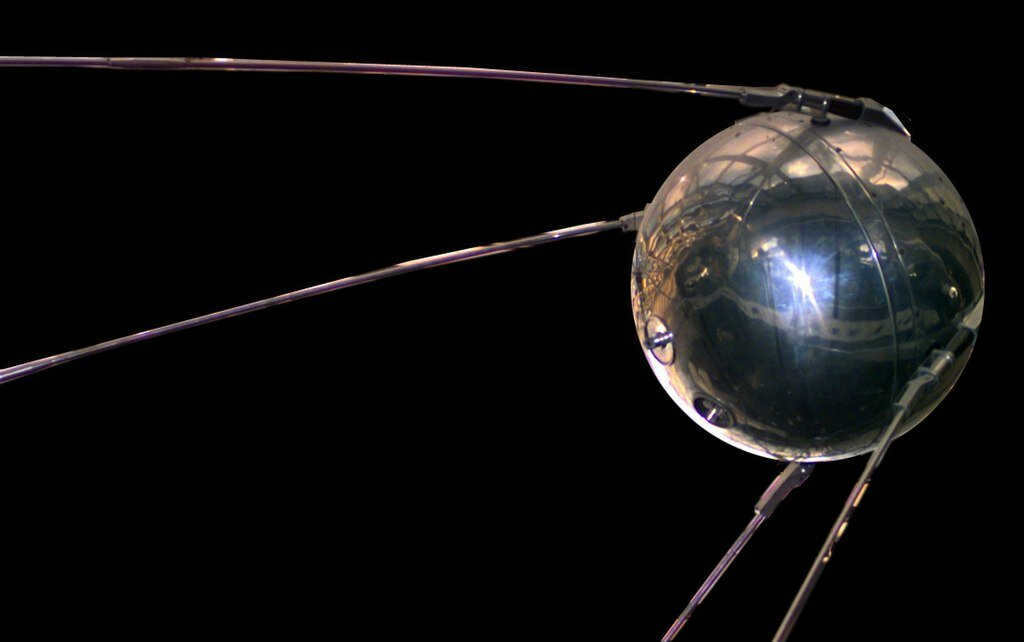
The origin of space exploration is closely connected to the start of the arms race between the Soviet Union and the United States. Both countries placed great importance on being the first to conquer space. They were determined to maintain their technological supremacy, and the Soviet Union was particularly eager to surpass its rival and take the lead in space exploration.
The primary rocket scientist during that time period was Sergei Korolev. He was the one who proposed his plan for a man-made satellite to the Minister of Defense Industry in 1954. In 1955, the United States also made an announcement: on July 29, 1955, President Dwight Eisenhower declared through his press secretary that the first artificial satellite would be launched during the International Geophysical Year.
Preliminary design work in the USSR was completed in July 1956. At that point, the satellite model was named object D. The test launch was originally scheduled for 1957, but Korolev realized that the project’s complexity was too high and it would not be feasible to meet the deadline.
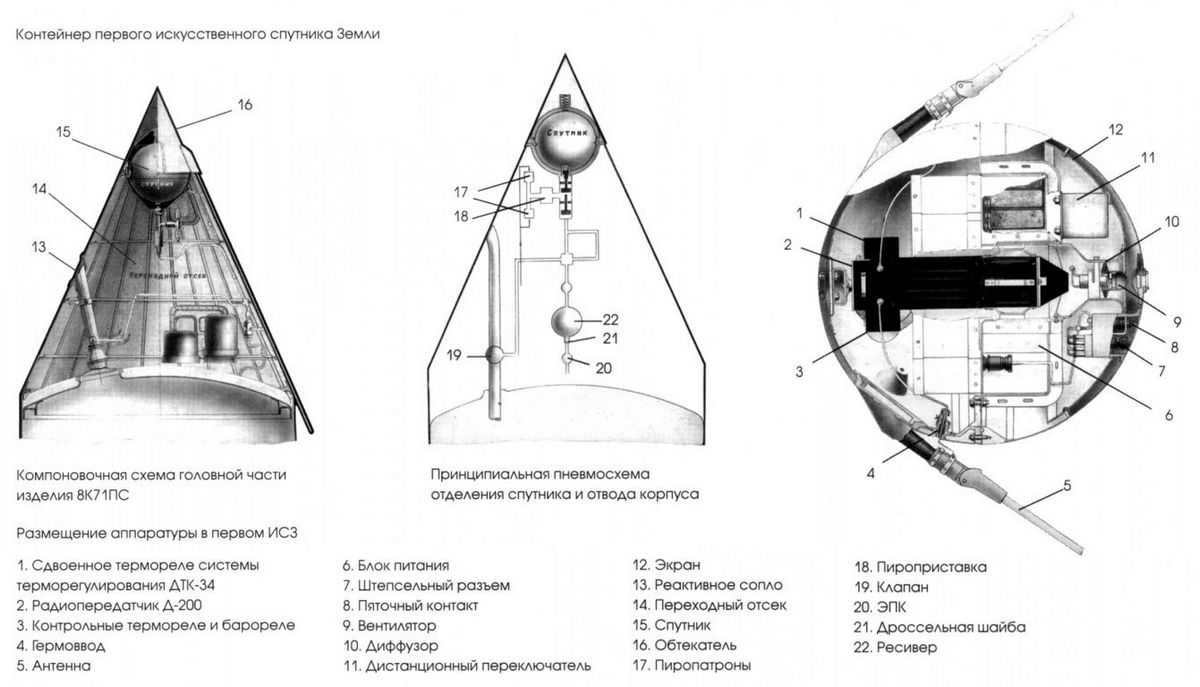
In order to prevent the United States from launching the satellite first, the Soviet authorities opted to develop a simplified and more easily producible setup, which would be launched in the spring of 1957.
What did the world’s first artificial satellite look like?
The world’s first artificial satellite had a sphere with a diameter of 58 centimeters and a mass of 83.6 kilograms. It was equipped with two pairs of antennas, each consisting of two parts measuring 2.4 and 2.9 meters in length. The mastermind behind Sputnik 1 was Mikhail Khomyakov. He led the antenna laboratory, which was headed by Mikhail Krayushkin.
The initial man-made satellite of the Earth was sent into space on October 4, 1957 from the 5th scientific and testing site of the Ministry of Defense of the USSR known as “Tyuratam”.
Tyuratam was situated in the Kazakh SSR and is presently an active spaceport called “Baikonur“.
“Sputnik 1” remained in orbit for 92 days and completed 1440 revolutions around the Earth before concluding its mission on January 4, 1958.
Although small in size, this pioneering artificial satellite captivated the attention of people from all continents and nations, representing the audacious aspirations of humanity. Sergey Korolev
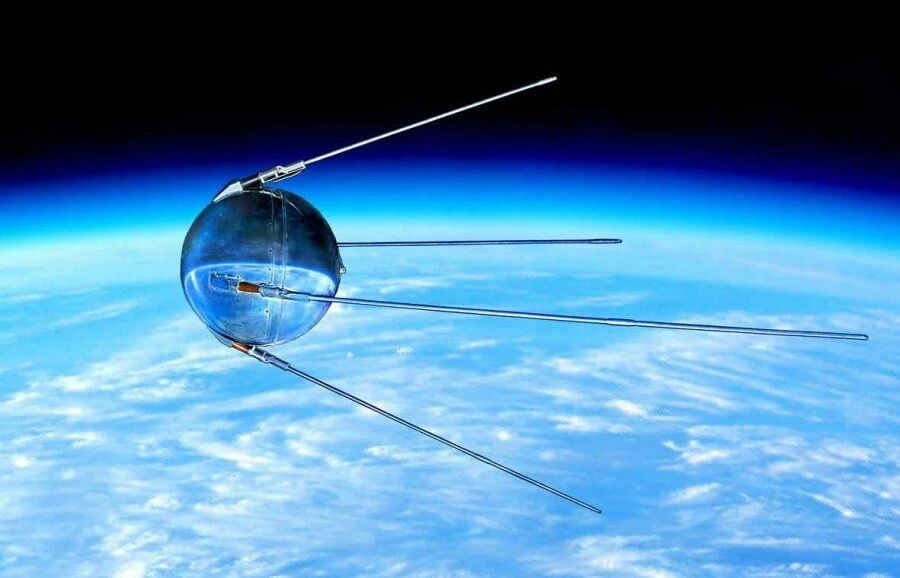
The Ural region’s role in space exploration
Did the Ural region play a part in the development of the first ever artificial satellite? Absolutely. For instance, at the Uralmashzavod factory in Yekaterinburg, they produced the components used to manufacture the body of the pioneering satellite.
Once upon a time, there was an intriguing tale. When the body was prepared, the mastermind behind it, Sergei Korolev, came to inspect. Upon examining it, he inquired, “Who was responsible for welding it?” A man emerged from the crowd. Korolev asked, “Was it done by hand?” The man confirmed that it was indeed done by hand. It was at this moment that Sergei Korolev realized that a new era was dawning upon humanity, and the days of working in an “artisanal” manner were over.
In 1957, an observatory for artificial satellites was established at the Ural University in Sverdlovsk. Merely three years later, the Urals State University had a department dedicated to astronomy and geodesy, led by the chair of astronomy and geodesy.
Cosmonautics in the Urals has been rapidly advancing. Numerous new enterprises and museums have been established, several of which remain active to this day. At present, the Urals contribute to the production of control system components for Soyuz launch vehicles, nickel-hydrogen batteries for satellites, and various other resources that aid the nation in exploring the vast and enigmatic realms of outer space.
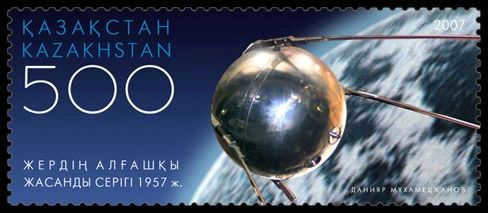
Discover fascinating information about the connection between the Urals and space exploration!
The Yekaterinburg Museum of Cosmonautics and Rocket and Space Technology
The Yekaterinburg Museum of Cosmonautics and Rocket and Space Technology is an official museum affiliated with NPO Automatics, a prominent enterprise in the Russian space industry. Here, you can delve into the history of the creation of the world’s first artificial satellite.

The museum features 3 expositions that are dedicated to the various stages of cosmonautics development, both in the Urals and throughout the entire country:
1. “The Origins” exhibition showcases samples of the first radios and radio receivers.
2. “From Ballistic Missiles to Space Missiles: The Launches of the New Millennium” provides a detailed account of the creation of the first artificial satellite.
3. “Civilian Products of NPO Automatics”.
How to Spend the Day of the First Artificial Satellite Launch?

On the occasion of the First Artificial Earth Satellite Launch, we present to you an exciting tour of Yekaterinburg, known as the “Hidden Space” tour. It’s a unique opportunity to discover the hidden space-themed artwork that can be found in the city’s public gardens and parks.
Explore all the trees adorned with these captivating space pictures in Yekaterinburg. You can find their descriptions and photos in the KUDA mobile application. Download the app from the App Store, Google Play Market, or AppGallery.

The launch of the world’s first artificial satellite into Earth orbit 65 years ago marked the beginning of the space era, shaping the course of scientific and technological progress for decades to come.
The concept of creating an artificial satellite of the Earth (ASE) emerged in the late 17th century. In his publication “Mathematical Foundations of Natural Philosophy,” Isaac Newton proposed the launch of a core into orbit, revolving around the Earth. This delivery method involved a large cannon positioned at the highest point on Earth. The charge placed in the cannon was designed to provide enough flight speed for the core to prevent it from falling to the Earth’s surface. Once in orbit, the speed would compel the core to revolve around the Earth. This velocity is now referred to as the “first cosmic speed,” which is approximately 8 km/s for the Earth.
Several scientists and authors, such as Otto Geil, Alexander Belyaev, and Vadim Nikolskiy, have proposed the idea of using an ISV as a hub for interplanetary spacecraft traveling to the Moon, Mars, and Venus. The ISV would serve as a central location where all the necessary resources for the continuation of the journey would be concentrated. Additionally, there were plans to equip the ISV with a telescope, allowing astronomers to observe distant celestial objects directly from orbit, eliminating any distortions caused by the Earth’s atmosphere.
The next step was to determine how to transport the ISV into orbit. However, this is where the difficulties arose. Jules Verne, a renowned science fiction writer, described the technical implementation of the “Newton’s gun” method in his novel “500 Million Runners”. Unfortunately, it turned out to be quite problematic and expensive in practice. Additionally, the newly developed rockets at that time were unable to provide the necessary speed. As a result, alternative options, such as the one proposed by Major-General Georgy Pokrovsky in his 1944 article “A New Earth Satellite”, started to emerge.
Simultaneously, Pokrovsky had full knowledge that due to the immensely powerful explosion during liftoff, there would be little left of the satellite in the end. However, he maintained hope that the launch would yield a wealth of fresh insights into the phenomena taking place in the atmosphere, on the surface, and below.
The original idea of becoming a satellite of the Earth was first expressed by Konstantin Tsiolkovsky
"The initial achievement for mankind is to venture beyond the Earth’s atmosphere and orbit around our planet," wrote Konstantin Tsiolkovsky in his famous works. However, it was not until the latter half of the 20th century that this dream became a reality. In 1953, the United States conceived a groundbreaking plan to create an artificial satellite called the Minimum Orbital Unmanned Satellite of Earth. This innovative device would consist of a self-sufficient instrumentation and measurement system enclosed within a sturdy balloon. Upon reaching a predetermined altitude, the balloon would detach from the launch vehicle’s third stage. The satellite’s orbit, positioned at an altitude of 300 km, was designed to traverse both poles of the Earth. The launch was initially scheduled for the years 1957-1958.
The development of an ISR began in the Soviet Union. The concept of launching a satellite was initially proposed by Soviet engineer Mikhail Tikhonravov. The chief designer of OKB-1, Sergei Korolev, based his work on Tikhonravov’s ideas, and wrote to the USSR Academy of Sciences advocating for the creation of a specialized body to develop a program of scientific research using a series of artificial Earth satellites. This program would involve launching biological satellites with animals on board. The proposed organization would prioritize the manufacturing of scientific equipment and would aim to attract top scientists to participate in these endeavors.
Academicians gave their approval to Korolev’s suggestion, and on January 30, 1956, the Council of Ministers Resolution No. 149-88ss was passed, entitled “On the Establishment of Object “D” – the designation for the untargeted satellite weighing between 1000 and 1400 kg. A portion of this weight, ranging from 200 to 300 kg, was allocated for scientific apparatus. Multiple options were put forth, with one of them including a container holding “biological cargo” – specifically, a test dog.
Launch and flight
At 10:28 p.m. Moscow time on the evening of Friday, October 4, a R-7 rocket soared into the sky from the Tyuratam Cosmodrome. Just five minutes after liftoff, a satellite detached from the rocket and immediately began transmitting its distinctive call signs – “Beep! Beep!”. It didn’t take long for a TASS message to circulate among news agencies worldwide, declaring, “Through the immense efforts of research institutes and design bureaus, the world’s first man-made satellite has been successfully developed and deployed in Earth’s orbit.”
On the 5th of October, 1957, Pravda newspaper published an article stating that the first satellite was successfully launched by the USSR on the 4th of October, 1957. Initial data suggests that the launch vehicle provided the satellite with the required orbital velocity of approximately 8000 meters per second. Currently, the satellite is following elliptical trajectories around the Earth, and its path can be observed during sunrise and sunset using basic optical instruments such as binoculars and telescopes. Regular updates on the subsequent movements of the first artificial satellite launched by the USSR on October 4th will be broadcasted by radio stations.
The satellite completed a total of 1440 revolutions around the Earth during its 92-day orbit, covering a distance of approximately 60 million kilometers. Additionally, its radio transmitters remained operational for a period of three weeks following its launch. Throughout this time, various tests and evaluations were conducted to assess the effectiveness of the equipment, calculations, and technical solutions implemented for the mission. Furthermore, the satellite facilitated ionospheric studies to examine the passage of radio waves and determine the density of the upper atmosphere. Ultimately, on January 4, 1958, the satellite disintegrated as it encountered the dense layers of the Earth’s atmosphere.
“An event of global significance on par with the detonation of the atomic bomb.”
The launch of the satellite held immense importance for both the Soviet Union and the entire world. This groundbreaking achievement allowed our country to surpass all competitors in the race for space, securing a leading position. “90 percent of the conversation about artificial Earth satellites originated from the United States. However, it became evident that 100 percent of the actual progress came from Russia…” – as stated by the New York Times during those times. The United States’ reputation suffered a significant blow.
The ISR enabled the study of the upper layers of the ionosphere, which was previously impossible. Moreover, invaluable information regarding the operational conditions of the equipment was obtained, all calculations were verified, and the density of the upper atmosphere was determined – providing crucial insights for future launches.
In honor of the inaugural flight of the initial man-made satellite in September 1967, the International Federation of Astronautics has designated October 4th as the Day of the Commencement of the Human Space Era.
It is rather peculiar that the initial man-made satellite in the history of humanity was only capable of basic “radio writing”. It was unable to transmit any information regarding its journey.
Despite the fact that a comprehensive government program had been in progress for nearly two years to develop a space laboratory, this is surprising.
The reason behind this is the intense space race between the USSR and the U.S. at that time – a competition to determine which country would be the first to launch an artificial satellite.
Reports indicated that the U.S. was preparing to launch their first satellite in the following year, 1958. The objective was to be the first to venture into space. Developing the laboratory required time, whereas launching a simple satellite could be done quickly. This accounts for the design of the initial satellite, which incidentally had the codename PS-1 (Simple Satellite No. 1).
The goal of being the first to reach space was successfully achieved.
On November 3, 1957, the Soviet Union successfully sent its second satellite into orbit, equipped with a plethora of scientific instruments and carrying the world’s first animal astronaut, the dog Laika.
It wasn’t until February of the following year that the United States launched its own satellite. Therefore, it can be said that the first ever space science laboratory belonged to the Soviet Union.
Characteristics of the First Earth Satellite’s Flight
The launch of the launch vehicle took place on October 4, 1957, at 19:28:34 GMT. The satellite’s flight came to an end on January 4, 1958. It weighed 83.6 kilograms and had dimensions of 58 centimeters, with the largest diameter. The circulation period was 96.7 minutes. Its perigee was 228 kilometers away from the nearest orbital point to the Earth’s surface, while its apogee was 947 kilometers away from the farthest point of the orbit to the Earth’s surface. The satellite completed 1440 revolutions during its mission.
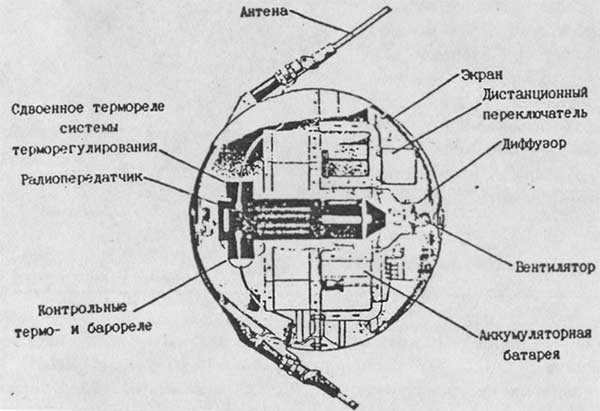
After decoding the telemetry, it became evident that we narrowly avoided failure by a mere fraction of a second.
During the 16th second of the flight, a malfunction occurred in the fuel supply system, resulting in increased kerosene consumption. As a result, the main engine operated for one second less than the anticipated duration. This single second could have been insufficient for the satellite to reach the necessary velocity for entering space, causing it to plummet back to Earth.
The second during the final stage of acceleration holds significant importance. Due to this second, the satellite was placed into an orbit that was approximately 90 kilometers below the intended altitude!
In any event, the initial Earth satellite was effectively placed into orbit.
After 90 days of being in flight, on January 4, 1958, the inaugural Earth satellite descended into the dense layers of the atmosphere and disintegrated. Only replicas of it were exhibited.
By the way, it is worth mentioning that the first satellite itself was not visible from the Earth. The bright spot that was observed by the entire world was actually a much larger upper stage from the launch vehicle. This stage flew in close proximity to the satellite for a period of time and served as an additional reference point for tracking the trajectory of the satellite from Earth.
However, this stage was also an artificial satellite of the Earth – it orbited alongside the PS-1! So all was fair 🙂
The invention of the initial Earth satellite
A replica of the contraption used to launch the very first man-made satellite into Earth’s orbit on display at an exhibition commemorating the 40th anniversary of this historic event. Moscow, October 3, 1997.
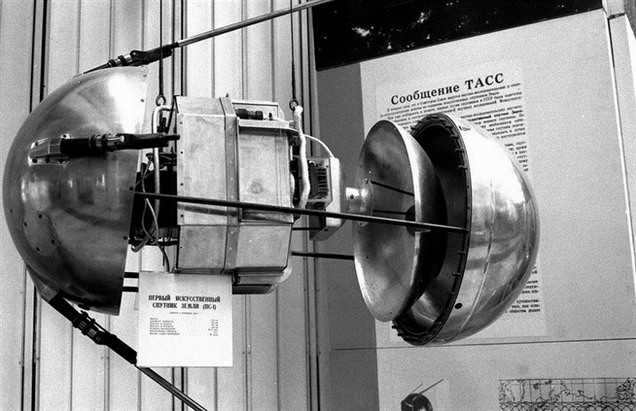
It is apparent that there was hardly anything remarkable on the satellite – just a radio transmitter. The explanations for this were previously outlined.
Sputnik-1 was situated in the upper part of the launch vehicle, beneath the fairing.
Inside the satellite, there were: a radio transmitter and its battery, a fan with a thermorelay and a temperature regulation system duct, an on-board electrical automation device. Additionally, there were temperature and pressure sensors. And lastly, the electrical wires that interconnected everything.
It is quite typical to observe a shooting star, a satellite in the sky. Only yesterday, within a matter of minutes, I spotted 4 objects. And how many are there altogether? – I pondered, and the answer I discovered was quite astounding. I will attempt to briefly share some intriguing details.
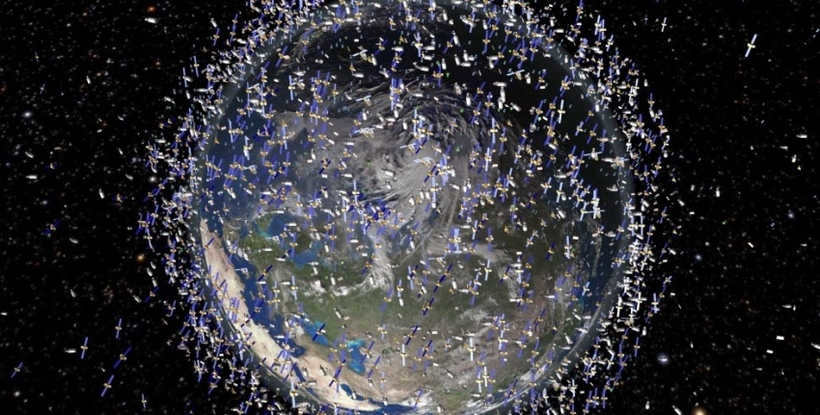
The initial man-made satellite
On October 4, 1957, humanity witnessed the dawn of a new era – the age of space exploration. It was on this significant day that the very first man-made satellite, “Sputnik 1,” was launched into space from the Baikonur Cosmodrome. Despite its relatively small weight of 83.6 kilograms, the successful delivery of this satellite to orbit was a monumental achievement at that time.
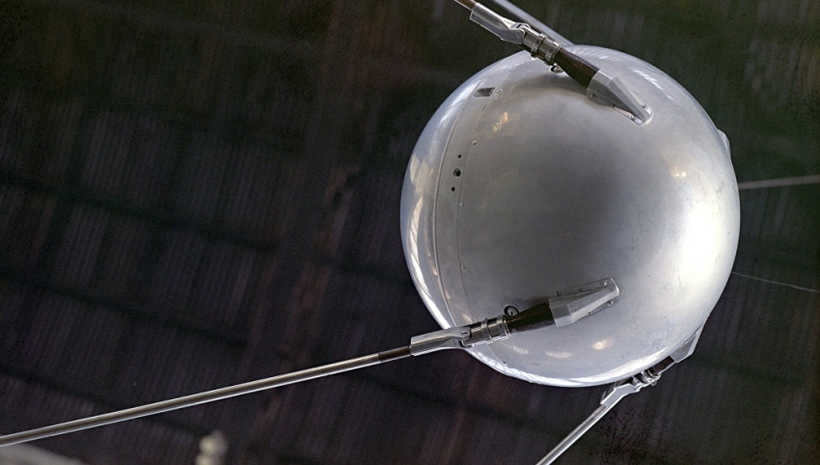
Emitting waves on two frequencies – that’s the complete range of its capabilities, however these days the capabilities and tasks of satellites have significantly expanded.
Man-made satellites
To start with, it’s important to understand what object can be classified as such. According to international agreement, such an object is referred to as a vehicle that has completed at least one orbit around the planet. Otherwise, it is customary to call the device a space probe. Man-made satellites are categorized into two types: Applied and research and development. In turn, a vehicle that carries a transmitter is considered active, otherwise the vehicle is considered passive.
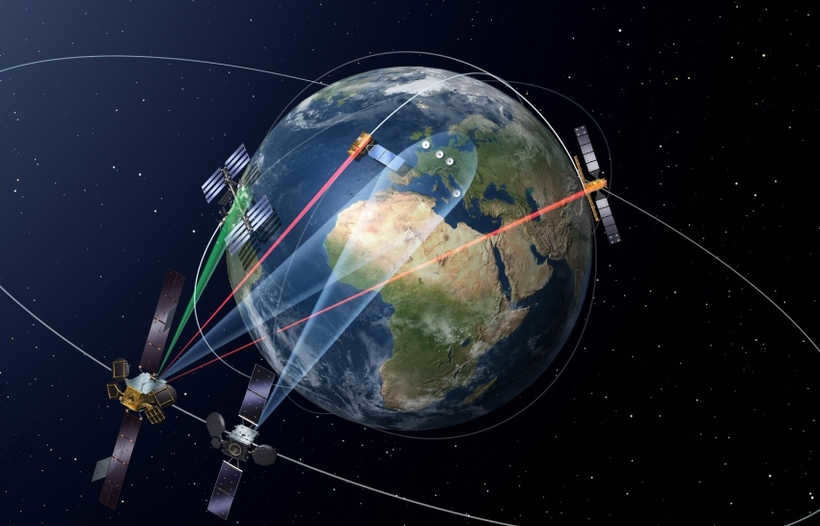
Satellite Varieties
Based on their intended use and specific tasks, an ISR can fall into one of the following categories:
- reconnaissance – satellite designed for gathering information;
- meteorological – satellite used for studying and predicting weather patterns;
- astronomical – satellite dedicated to exploring celestial objects, such as planets;
- spacecraft – manned vehicle designed for space travel;
- navigational – satellite responsible for ensuring the functionality of navigation systems;
- experimental – satellite used for practical testing of new satellite technologies;
- small satellite – satellites that weigh less than one ton;
- space station – similar to a spacecraft but designed for long-term habitation in space.
Currently, there are approximately 17,000 objects orbiting the Earth, consisting of both functioning vehicles and non-operational space debris. Out of this total, around 4,000 are active spacecraft, while the remaining 13,000 are classified as space debris.
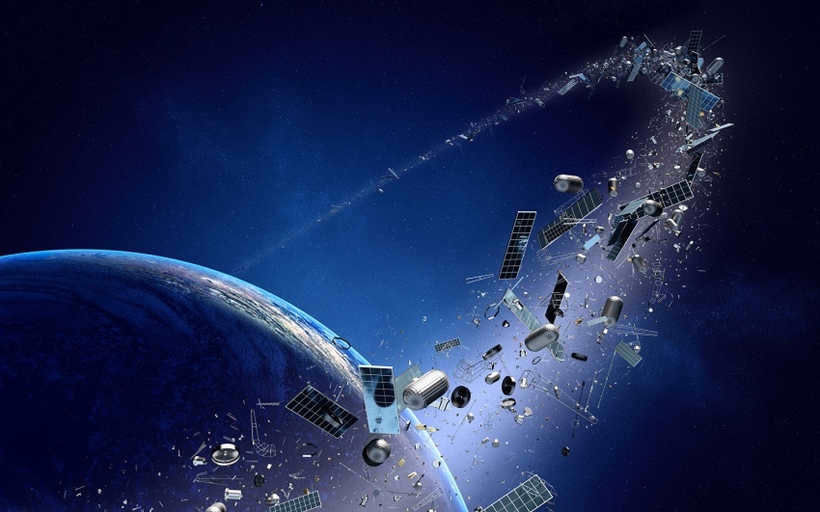
Space “incident”
In 2009, the initial encounter between the ISV – Iridium-22 and Cosmos-2561 took place. The “incident” occurred at an altitude exceeding 750 kilometers and came as a complete surprise. Despite the fact that the potentially dangerous rendezvous had been predicted in advance, due to unknown circumstances it failed to materialize at the most critical moment. Iridium failed to establish contact. Only a short while later, a cluster of debris was observed in orbit – the collision had indeed occurred.
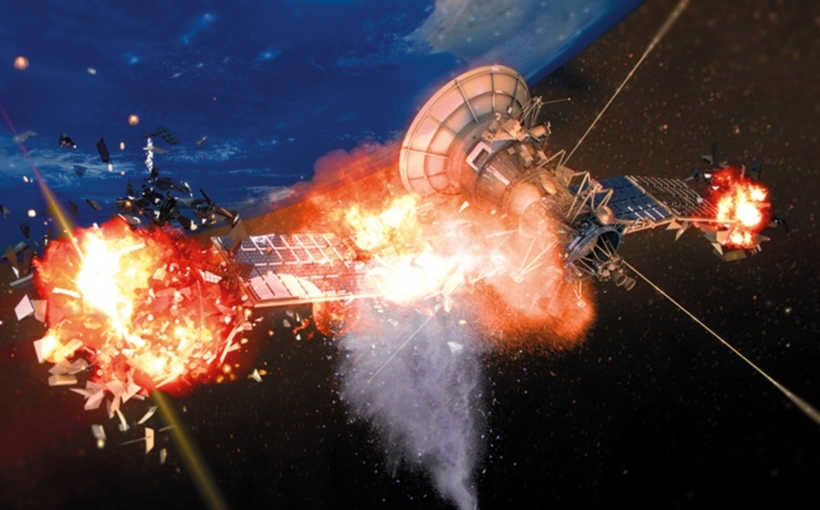
The results were rather severe. Besides the destruction of two costly spacecraft, a plethora of fragments had clustered together, creating a dense cluster. This has significantly augmented the quantity of hazardous space debris for space missions. Experts anticipate that such an event may occur approximately every decade, and within merely half a century, the orbital space will become practically impassable for future missions.
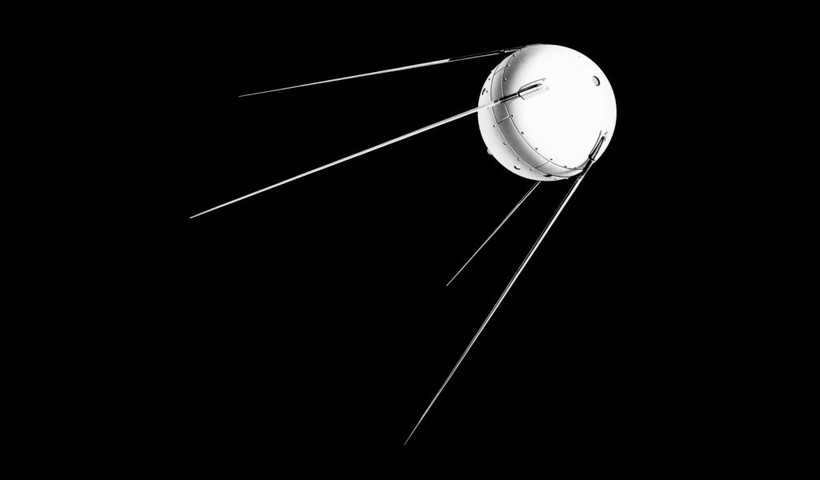
In Russia, it is unlikely that you will find a person who is not aware of the identity of the first individual to venture into space. However, when it comes to the first satellite, the situation becomes more complex. Many individuals are not even aware of the country to which it belonged. I suppose I would have fallen into this category as well, if not for my father’s thoughtful gesture when I was eight years old. He gifted me a collection of videotapes solely dedicated to space exploration.
Who was the first to send an artificial satellite into space and when?
The pioneers of space exploration, Soviet scientists, successfully launched the first artificial satellite, PS-1, into space in 1957. This groundbreaking achievement marked the beginning of a new era in scientific advancements and sparked the legendary space race between the USSR and the USA.
The historic launch took place in the middle of May at 7 PM. The design of the spacecraft was elegantly simple, featuring two beacons that enabled the measurement of its flight trajectories. Interestingly, after notifying Moscow of the satellite’s readiness for launch, Korolev, the mastermind behind the mission, received no response and took the bold step of independently positioning the satellite for liftoff.
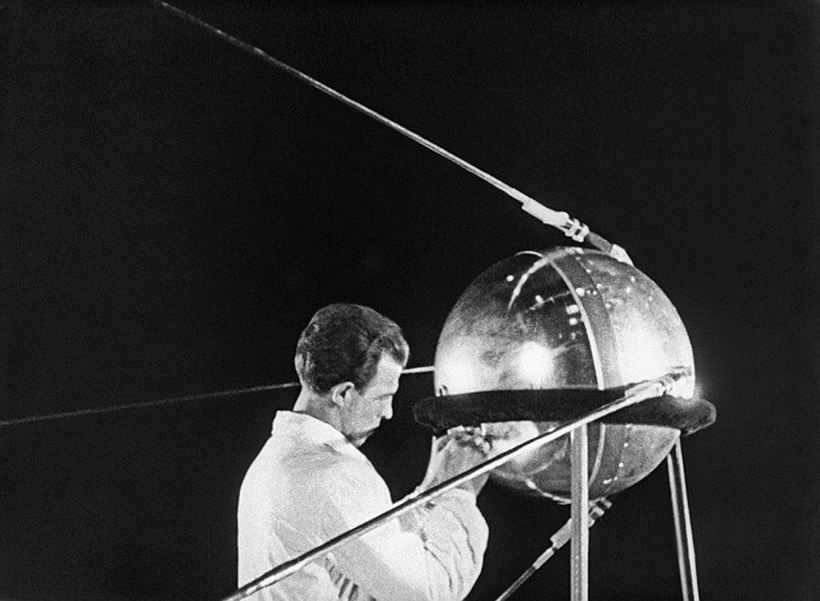
The Origins of the First Satellite
The dawn of rocket science can be traced back to the early 20th century, when the concept was first introduced through theory. It was during this time that the renowned scientist Tsiolkovsky published an article on the development of the jet engine, which included a prediction about the future creation of satellites. Despite having numerous students who later worked to popularize his ideas, Tsiolkovsky was often dismissed as a mere dreamer or even an autocrat.
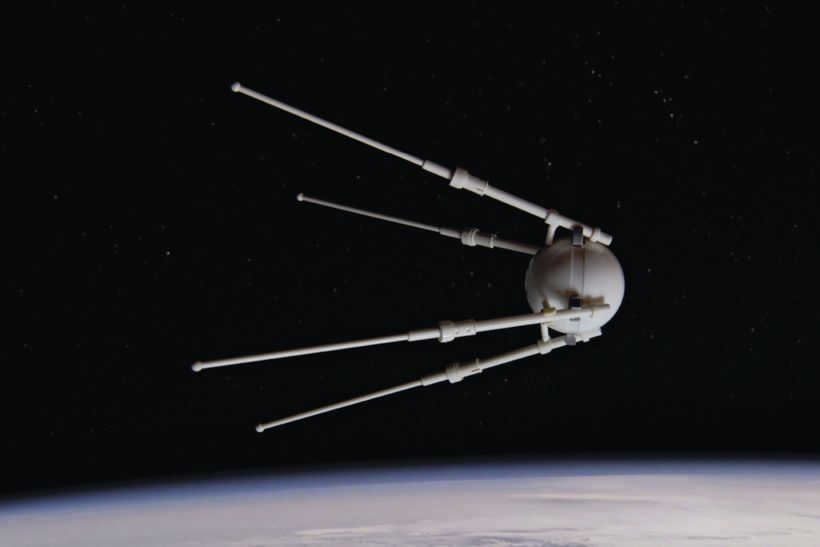
- In 1933, the first rocket powered by a jet engine was successfully launched;
- The German FAU-2 rockets were invented in 1943;
- From 1947 to 1954, a series of rocket launches known as P1-P7 were conducted.
In the early months of 1957, a decision was made to send a complete rocket into the vastness of space. However, news reached the Soviet Union that the United States had plans to launch their own artificial satellite in 1958. As a result, the USSR made the strategic choice to get ahead of their competition.
The first launch of an artificial satellite during the Soviet era is a well-known historical event. This is a topic of great interest to me, as I find space and its history fascinating. I would like to delve into the specifics of when this satellite was launched and the individuals involved in this groundbreaking achievement.

Satellites: A Definition
First and foremost, a satellite is a flying vehicle designed to remain in space for an extended period of time. Upon entering space, a satellite begins to orbit our planet in a specific path. All satellites, including space rockets, require an initial velocity to enable them to navigate around the planet. This velocity is typically equivalent to or greater than the initial cosmic velocity. Satellites often reach altitudes of up to 500,000 kilometers. However, there is also a lower limit: the Earth’s atmosphere. Once a satellite enters the atmosphere, it experiences rapid deceleration.
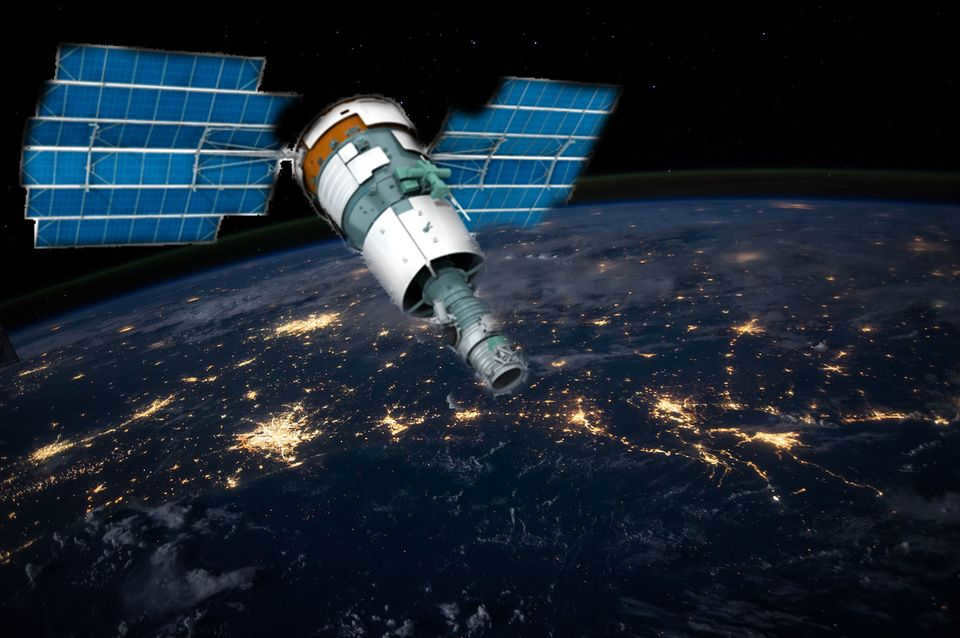
Classification of satellites
There are several primary categories of satellites:
- Biosatellites (utilized for conducting animal experiments in space);
- Space stations (spacecraft designed for extended periods of time outside of Earth);
- Astronomical satellites (employed for studying planets or other celestial objects);
- Spacecraft (guided vehicles for space travel);
- Meteorological satellites (necessary for weather forecasting and climate monitoring);
- Communications satellites;
- Reconnaissance satellites.
This compilation represents the most fundamental types, which are commonly used and encountered in the vast expanse of space.
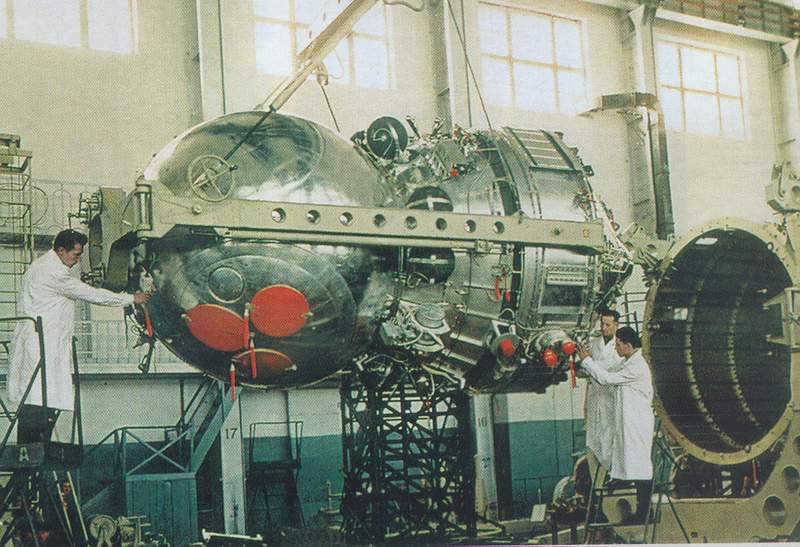
Launch of the inaugural Earth satellite
It is imperative to focus on the era of space exploration, commonly referred to as the space race, between the USSR and the United States. In terms of satellite launches, the Soviet Union emerged as the victor. Thus, in 1957, on October 4th, a momentous event took place – the first man-made Soviet satellite was successfully propelled into the Earth’s orbit. The name of this device, I believe, is familiar to everyone and has been heard numerous times – “Sputnik-1”. This name holds significance not just in our nation’s memory, but also in the collective consciousness of people around the world.

Human beings are constantly striving to comprehend the composition and capabilities of the cosmos. Not so long ago, I was not well-versed in the subject matter of satellites. However, driven by my curiosity, I managed to unravel certain aspects of this field.
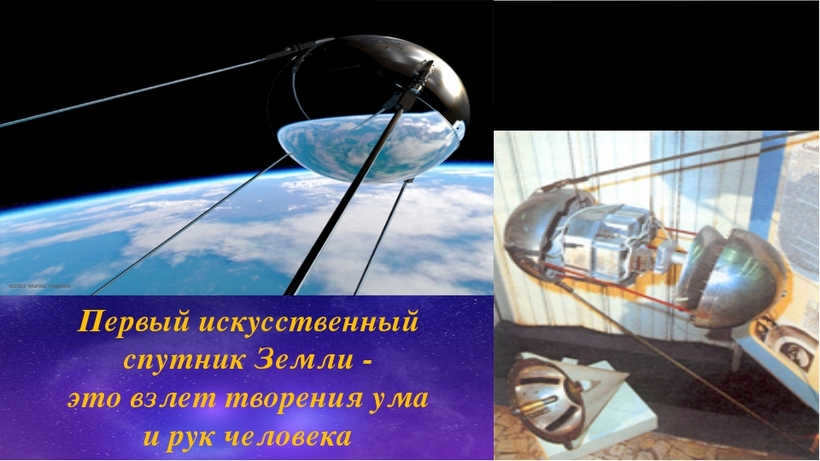
Understanding Satellites and Their Functions
I have a good understanding of artificial satellites, which are man-made inventions. A satellite is a mechanical device that orbits around other celestial bodies in outer space. The capabilities of these satellites are vast and varied. Some satellites are designed to receive and transmit signals, allowing us to enjoy television broadcasts. Others provide us with valuable information about weather patterns, potentially saving countless lives by warning of impending storms. Satellites also play a crucial role in the fishing industry, helping fishermen navigate far out at sea in search of fish. Additionally, satellites can capture images of the Earth’s surface, aiding in our understanding of global changes.
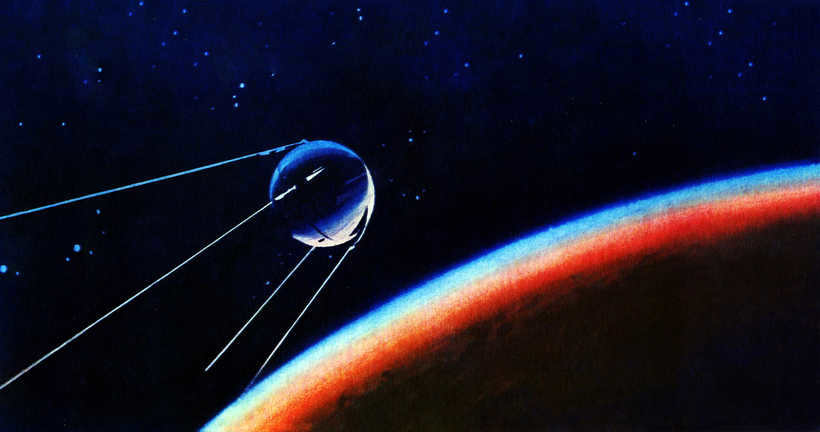
When the initial man-made satellite was launched
The debut satellite that was dispatched into space was Sputnik 1. This event took place in October 1957 in the USSR. The satellite ascended to an altitude of approximately 250 km and gathered data about the upper atmosphere. It penetrated the denser layers, where it completely incinerated. Launches were primarily overseen by governments. Nowadays, they have become more affordable and many are currently under the ownership of companies.
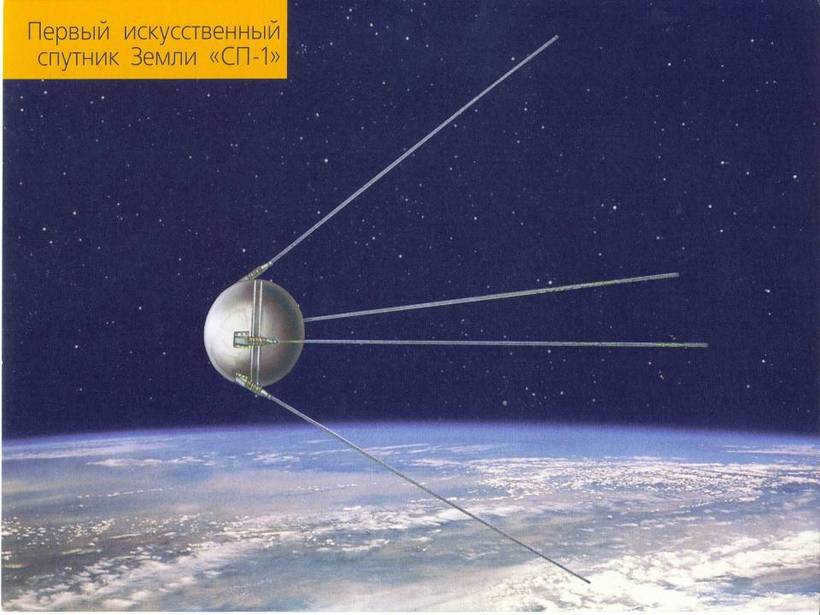
The Process of Launching Satellites into Space
Satellites are transported into space using rockets, which are commonly referred to as carriers. In order to accomplish this, specific launch sites have been established around the world:
- Canaveral in the United States;
- Baikonur in Kazakhstan;
- Kourou in France;
- Xichang in China.
These launch sites are strategically located in remote areas, far away from residential areas, in order to ensure that rocket stages fall into bodies of water or uninhabited areas. Once the satellite is in space, it begins to accelerate by utilizing its built-in engine. Once in orbit, the satellite is able to receive and transmit signals immediately.
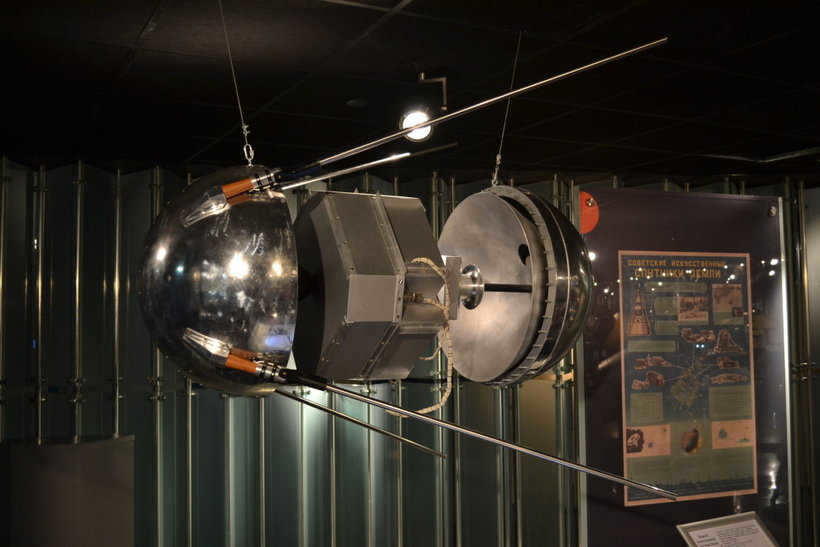
The future of satellites
Not long ago, I came across a fascinating article discussing the advancements in satellite technology. In the late 1970s, scientists started developing satellite power plants with the potential to revolutionize our energy sources. However, due to the exorbitant costs associated with the project, it was put on hold. The concept behind these power plants is to harness solar energy in high Earth orbit and transmit it to our planet. This renewable energy source could serve as a sustainable alternative to coal and oil, which are rapidly depleting.
It is my strong belief that the exploration of space is a crucial objective for humanity. Advancements in this field will enable us to gain valuable insights into the origins of the universe and its mysteries, which in turn plays a role in our understanding of the development of life on Earth and potentially on other planets. This endeavor began in the mid-20th century with the contributions of prominent scientists and cosmonauts from the USSR, who successfully sent the first man-made satellite into orbit, leading to the accomplishment of certain scientific objectives.
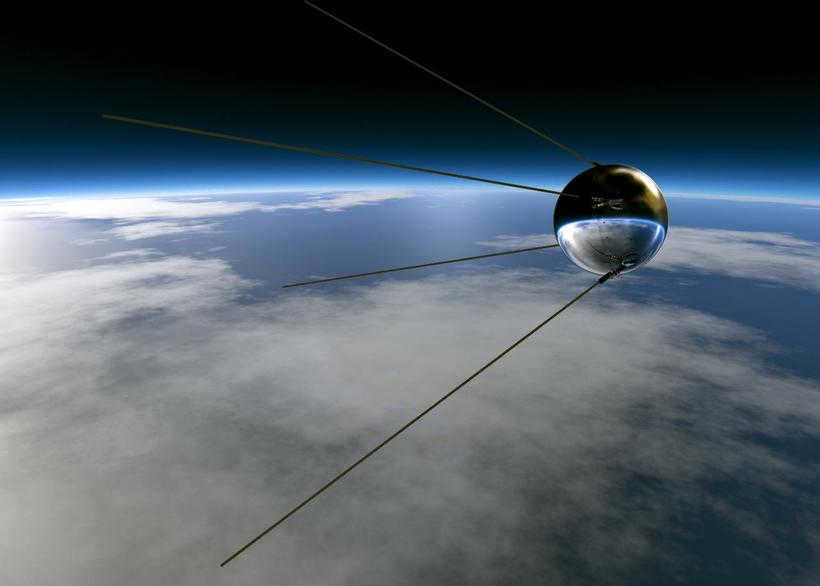
What was the process and timing of the first satellite launch?
The initial satellite to be launched was a Soviet spacecraft called PS-1, which stood for Simplest Sputnik-1. This name was fitting as the spacecraft was relatively uncomplicated compared to modern devices and appliances. It was launched into space using an intercontinental launch vehicle. Notable scientists of the past who contributed to this project included:
Preparations for the launch commenced in March 1957, with the actual launch taking place a few months later on May 5, 1957. Unfortunately, the launch did not go as planned, as the engines malfunctioned and the carrier vehicle collapsed, resulting in a complete fiasco.
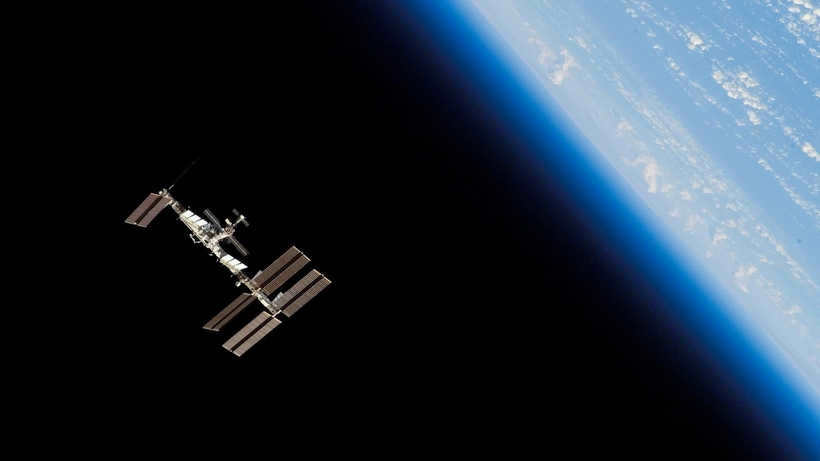
The first successful attempt in this field was accomplished on October 4, 1957, when the satellite finally managed to detach from the rocket and follow the correct path with the suitable spacecraft. the intended path with the adequate space velocity..
Scientists had many objectives, such as acquiring essential information by observing the Earth’s orbit. The signals from the satellite were detectable by any radio enthusiast of that era who tuned into the correct frequency.

As a whole, this occurrence had a significant impact, both in terms of politics and society. It served as a catalyst for the development of space exploration technology worldwide, leading to subsequent achievements such as the first manned journey to the Moon.

Not long ago, I came across an ancient scientific journal from the Soviet era. As I perused its pages, I stumbled upon details about the inaugural spacecraft of our planet – Sputnik 1. Intrigued, I embarked on a quest for more information, consulting multiple encyclopedias. And now, I am eager to impart this newfound knowledge.
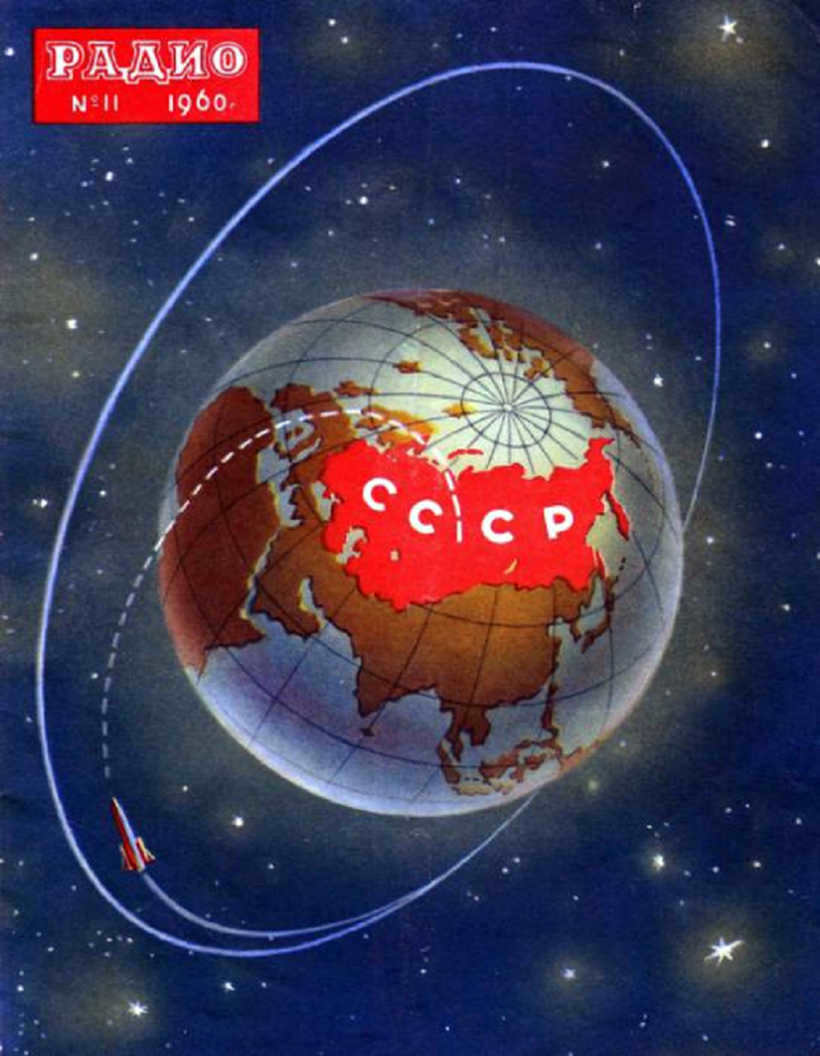
When and How the First Satellite was Launched
The Soviet Union was the first country in the world to develop and launch a functional satellite into the Earth’s orbit. We are all familiar with its appearance – a peculiar round metal sphere with four straight appendages. However, this remarkable invention went on to become a powerful emblem of the Soviet Union’s scientific and technological dominance.
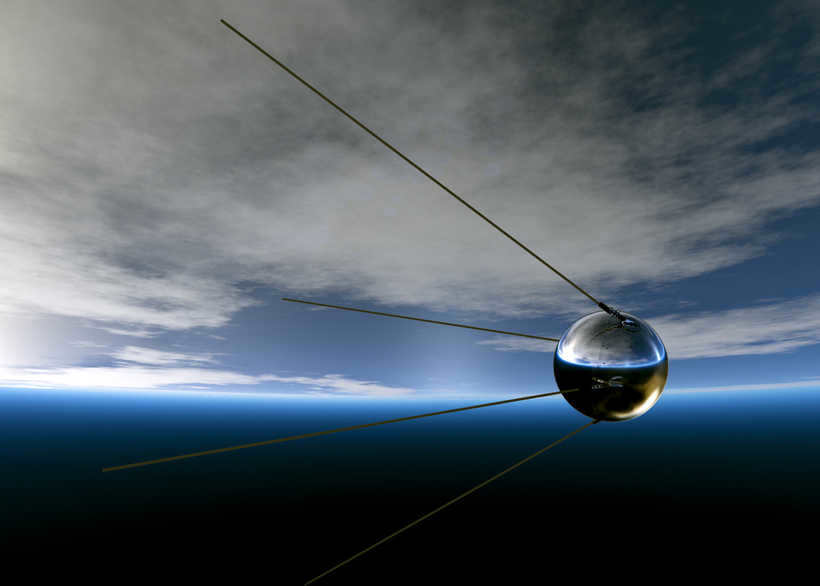
Exactly sixty years ago, on October 4, 1957, the satellite was successfully launched at 22:29 Moscow time. Just five minutes after its launch, it started transmitting special signals, which were heard as “Beep! Beep!”. This exciting moment caused jubilation among the people at the cosmodrome, who cheered and celebrated alongside the designers and engineers. It was at this moment that the TASS message was broadcasted, expressing gratitude for the remarkable collaboration between research institutes and design bureaus, resulting in the creation of the first ever artificial satellite of the Earth.
The Soviet Sputnik 1 completed a flight lasting 92 days. During this time, it successfully completed 1440 revolutions around the Earth, covering a distance of over 60 million square kilometers. The signals transmitted by the satellite were received for a period of two weeks after its launch. However, as it encountered the Earth’s atmospheric layers, the vehicle experienced friction which caused it to lose speed. Eventually, it reached the denser layers of the atmosphere where it ultimately burned up as a result of the intense air resistance.
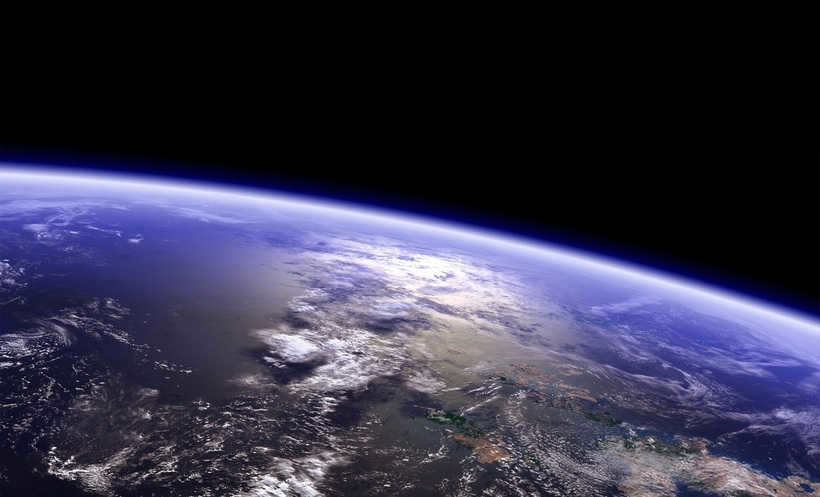
Importance and Outcomes of the Satellite Launch
The launch of the first-ever satellite had a momentous impact on the national pride of the country and dealt a significant blow to the reputation of the United States. This occurred despite all the misconceptions regarding the technical inferiority of the USSR.
The launch of Sputnik 1 encompassed several primary objectives:
- First and foremost, it aimed to assess the technical capabilities and performance of the spacecraft itself;
- Secondly, it aimed to investigate the influence of outer space conditions on the equipment;
- Thirdly, it aimed to determine the effectiveness of the satellite’s signals through various atmospheric layers.
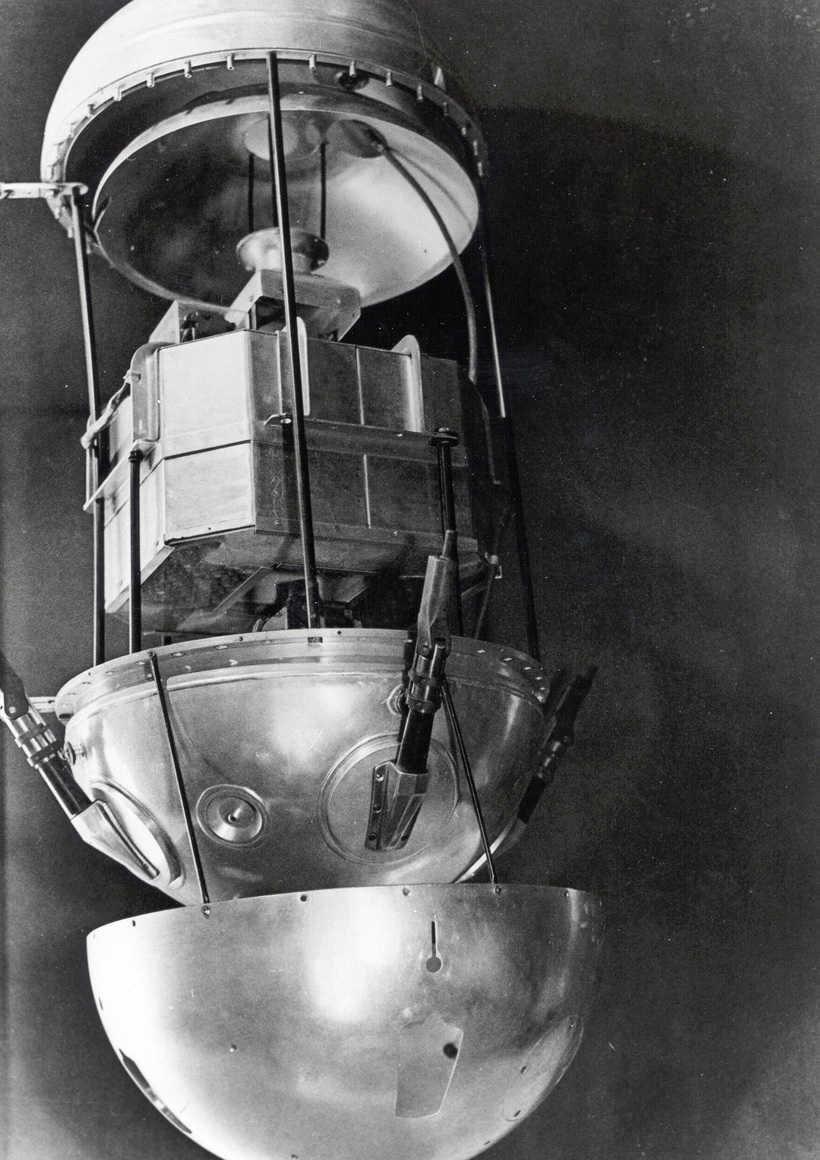
Curious details about Sputnik-1
The establishment of the inaugural satellite marked a significant milestone in the advancement of space exploration. Numerous intriguing particulars are associated with its successful deployment:
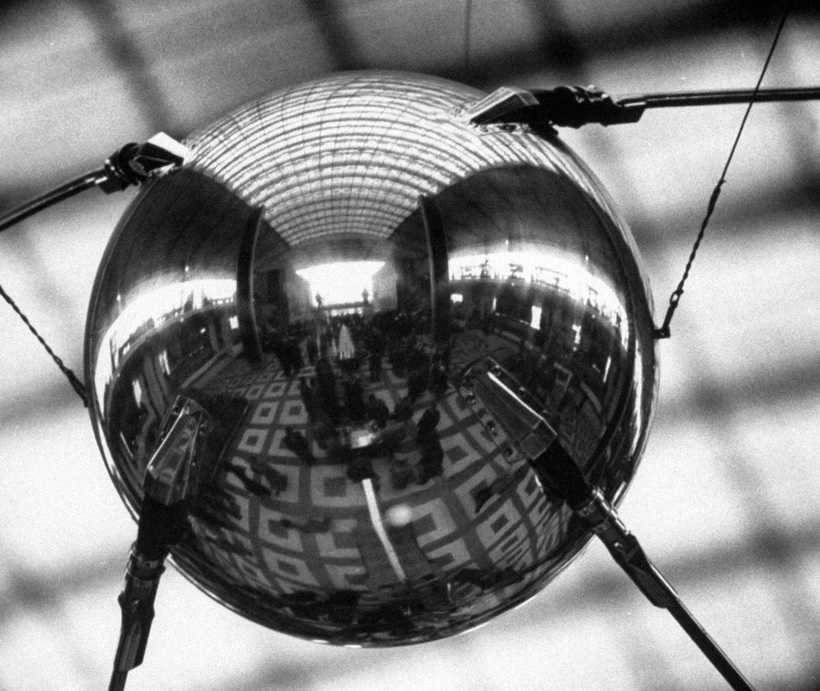
- The Soviet magazine Radio had pre-printed instructions for receiving the space signal from Sputnik 1.;
- Scientists used to take more than 30-60 minutes to calculate the spacecraft’s coordinates with a time reference. It now takes a computer 1-2 seconds to perform these calculations;
- A monument was erected on the 50th anniversary of Sputnik 1’s launch;
- The launch of Sputnik 1 prompted the United States to establish NASA;
- Before the Americans successfully put their first satellite into orbit, Soviet scientists had already accomplished this feat with Sputnik 2 in 1957. On board this historic spacecraft was an ordinary dog, making it the first living creature to venture into space. While the plan was for the dog to survive in orbit for over a week, it tragically perished shortly after launch due to extreme internal overheating;
- It is thanks to Sputnik 1 that the Internet as we know it exists today, as its launch prompted the Americans to develop what would become the World Wide Web.

